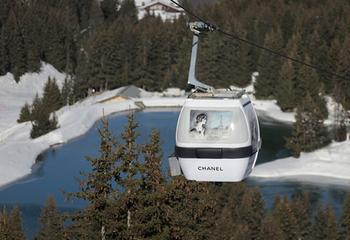 According to the support and traction methods, it can be divided into two types:
According to the support and traction methods, it can be divided into two types: Single-line type: Use a steel cable while supporting the weight of the crane and towing the crane or hanging chair.
Double line: Use multiple steel cables. One or two steel cables used to support the weight of the crane will not move, and other steel cables will be responsible for pulling the crane.
According to the walking method, the ropeway can be divided into:
Reciprocating: There is only one pair of cranes on the ropeway. When one of them goes uphill, the other goes down. After the two cars arrived at the station, they each walked in the opposite direction. This cableway is called Aerial Tramway. Reciprocating cranes generally carry more passengers and can reach 100 people per vehicle. They also have strong climbing power and good wind resistance. The reciprocating ropeway can reach a speed of 8 meters per second.
Circulation: There will be many cranes on the ropeway. The pulling rope is an endless pole. It is placed on both ends of the drive wheel and the turnaround wheel. When the crane or chair lifts from the starting point to the end point, it returns to the starting point through the shuttle wheel. The circulating crane is called Gondola lift
When the circulating ropeway can be subdivided
Fixed-cable type: When the crane or chair is in normal operation, the steel cable will not be released, so all the cranes on the same cable will have the same speed. In some fixed-rope cableways, the cranes are evenly distributed over the entire steel cable, and the steel cable runs at a fixed speed. This design is the simplest, but the disadvantage is that the speed can not be too fast (usually about one meter per second), otherwise it is difficult for passengers to climb. Some fixed-rope cableways also have a pulsating design. The cranes are divided into 4, 6, or 8 groups. Each group consists of 3 to 4 vehicles. The distance between the group and the group is the same. At the same time, the same group of cranes pick up and drop off passengers at the station. When one group of cranes is in the station, the steel cables and each group of vehicles slow down at the same time. After the crane left the station, it accelerated together. This kind of ropeway travels faster (0.4 meters per second in the station and about 4 meters per second outside the station). It is easy for passengers to get up and down, but the distance cannot be too long and the carrying capacity is limited.
Demounting type: also known as off hook type. The crane is held by a spring-controlled pliers on the pulling wire. When the crane arrives at the station, the crane clamps the cable clamps and releases the passengers. Before leaving the station, the crane will be mechanically accelerated to the same speed as the steel cable. The pliers on the crane will tightly fasten the steel cable and circulate. The speed of this ropeway is as fast as 6 meters per second and its carrying capacity is also large.
Our machine adhering to the " integrity,innovation,mutual win,beyond" business concept, and shoulder "do the best plastic&rubber auxiliary machine in China" corporate mission, according the market and customer demand-driven,scientific management,fiexible production. For the customer,supplier,employees,enterprise,society to create greater value, is committed to be the most influential plastic&rubber machine industry leader.
Plastic Auxiliaries,Used Injection Moulding Machine,Plastic Machine,Plastic Crusher Machine
Ningbo Tongyong Plastic Machinery Manufacturering Co. Ltd. , https://www.tongyong-machinery.com
